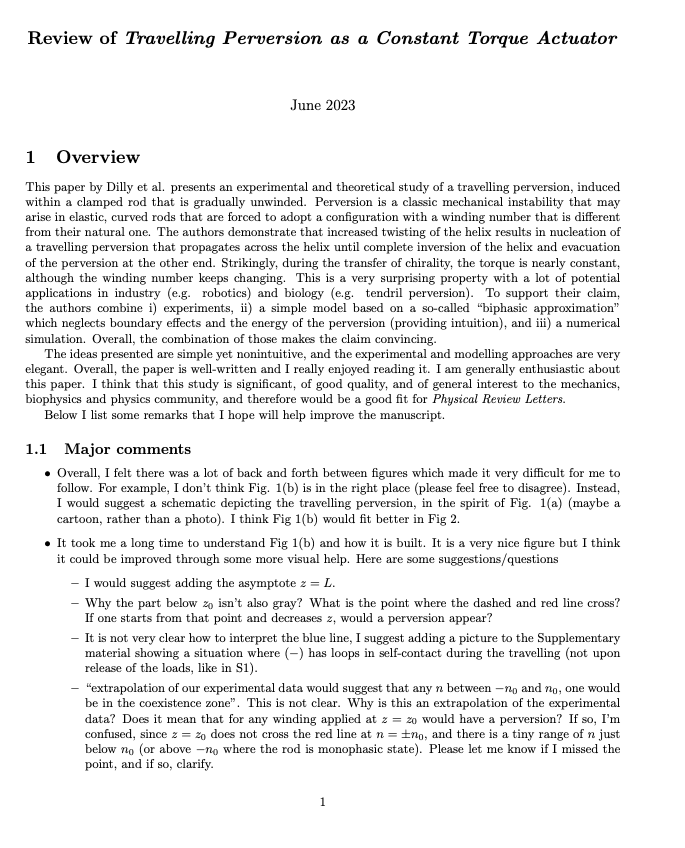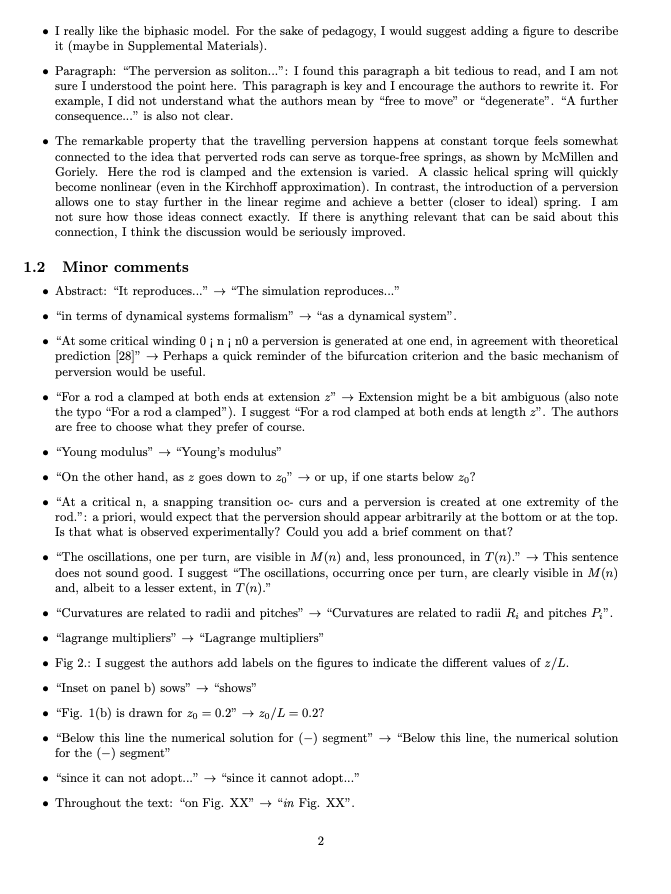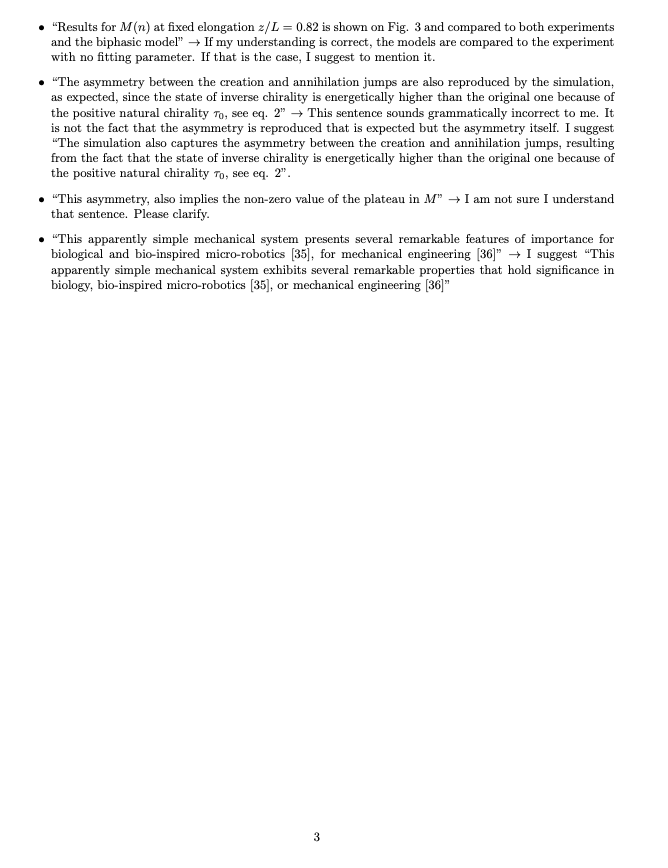Sébastien Neukirch
Institut Jean le Rond d'Alembert
Centre National de la Recherche Scientifique
Sorbonne Université, Campus Pierre et Marie Curie
Paris, Francetel: +33 1 44 27 72 61 (secr. 37 90)
e-mail: sebastien.neukirch (-atat-) sorbonne-universite.fr
cv hal
Home Research Vitae Publications Talks
Short list Full list
Traveling perversion as constant torque actuator
Émilien Dilly, Sébastien Neukirch, Julien Derr, and Dražen Zanchi
Physical Review Letters, 131 (2023) 177201
Abstract : Mechanical stress and conformation of helical elastic rods clamped at both ends were studied upon unwinding. By axial rotation of one end, the winding number was progressively changed from the natural one (n=n0) to complete chirality inversion (n=-n0) while keeping the total elongation fixed and monitoring the applied torque M and tension T. Along the unwinding process, the system crosses three distinct states: natural helix (+), mixed state (+/-), and inverted helix (-). The mixed state involves two helices with opposite chiralities spatially connected by a perversion (helicity inversion). Upon unwinding, the perversion is “injected” (nucleated) from one side and travels toward the opposite side where it is eventually 'absorbed' (annihilated), leaving the system in the (-) state. In the mixed state, the profile of M(n) is almost flat: the system behaves as a constant torque actuator. The three states are quantitatively well described in the framework of a biphasic model which neglects the perversion energy and finite size effects. The latter are taken into account in a numerical simulation based on the Kirchhoff theory of elastic rods. The traveling perversion in helical elastic rods and related topological phenomena are universal, with applications from condensed matter to biological and bioinspired systems, including in particular mechanical engineering and soft robotics.
DOI: 10.1103/PhysRevLett.131.177201
pre-print version: hal-04067727
journal version: PDF
Sent: May, 10th 2023
Reports: July, 7th 2023
Accepted: September, 15th 2023
Report of Referee A
The manuscript investigate analytically, numerically and experimentally chirality inversion and perversion of elastic rods in torsion.
The topic is very interesting and the results are new. The authors provide a full phase diagram that identifies the existence of positive/negative chirality and perversion states, depending on the winding number, n. Moreover, they show that perversions happen under constant torque, therefore a rod in such a state can be used as a constant torque actuator. Theoretical predictions are validated with numerical simulations and experiments. The methodology is robust and the modeling is sound.
However, the writing style of the manuscript needs improvement. There are many misspelled words throughout the manuscript and the wording is often confusing and contorted. These issues make the reading difficult.
For instance:
- the title is confusing: I recon is the rod that acts as an actuator, not the perversion.
- “relevant for”, I believe should be written as: “relevant to”
- “continous”-> “continuous” Page 1, at the end of the first column, last paragraph.
- second column, page 1: “For a rod a clamped at“ -> “For a rod clamped at”
- “we performed full numerical simulations”, what does full mean here?
-"This means that during inversion one has to provide work against the natural torsion of the helix in order to inverse the pitch." -> "to invert the pitch"
These are just a few examples, but there are plenty more in the manuscript that need to be addressed. I, therefore, suggest the authors check the manuscript thoroughly and correct all the misspellings, miswording and to improve the overall readability of the manuscript. Some sentences need to be rephrased. Please also check plural/singular cases, use of articles, etc. Once this work has been done, I will be happy to recommend the manuscript for publication.
Report of Referee B
The authors provide a refreshing view of an almost mundane artifact - a helical cord. In this case, one made from pure polymer, but nevertheless reminiscent of an old telephone cord (although not exactly). The analysis and experiment are well carried out and convincing.
Relatively major remarks:
1. In general, the paper is a bit technical. While a clear effort was done to simplify the text, any further simplification is welcomed.
2. The authors report an interesting phase diagram, however, the nature of the transition is not completely clear, is it a continuous transition? From the inset of Fig. 2. it is clear the transition is a continuous one, this should be noted clearly in the text.
Minor remarks -
1. In Figure 2, 3rd row from the bottom of the caption reads - "Inset on panel b) sows..." should read "shows".
2. On page 3 2nd column, 1st new paragraph: "...When computing the profiles of Fig. 2, we need to compare..." the letter "d" in the word "compared" should be omitted.
Report of Referee C


